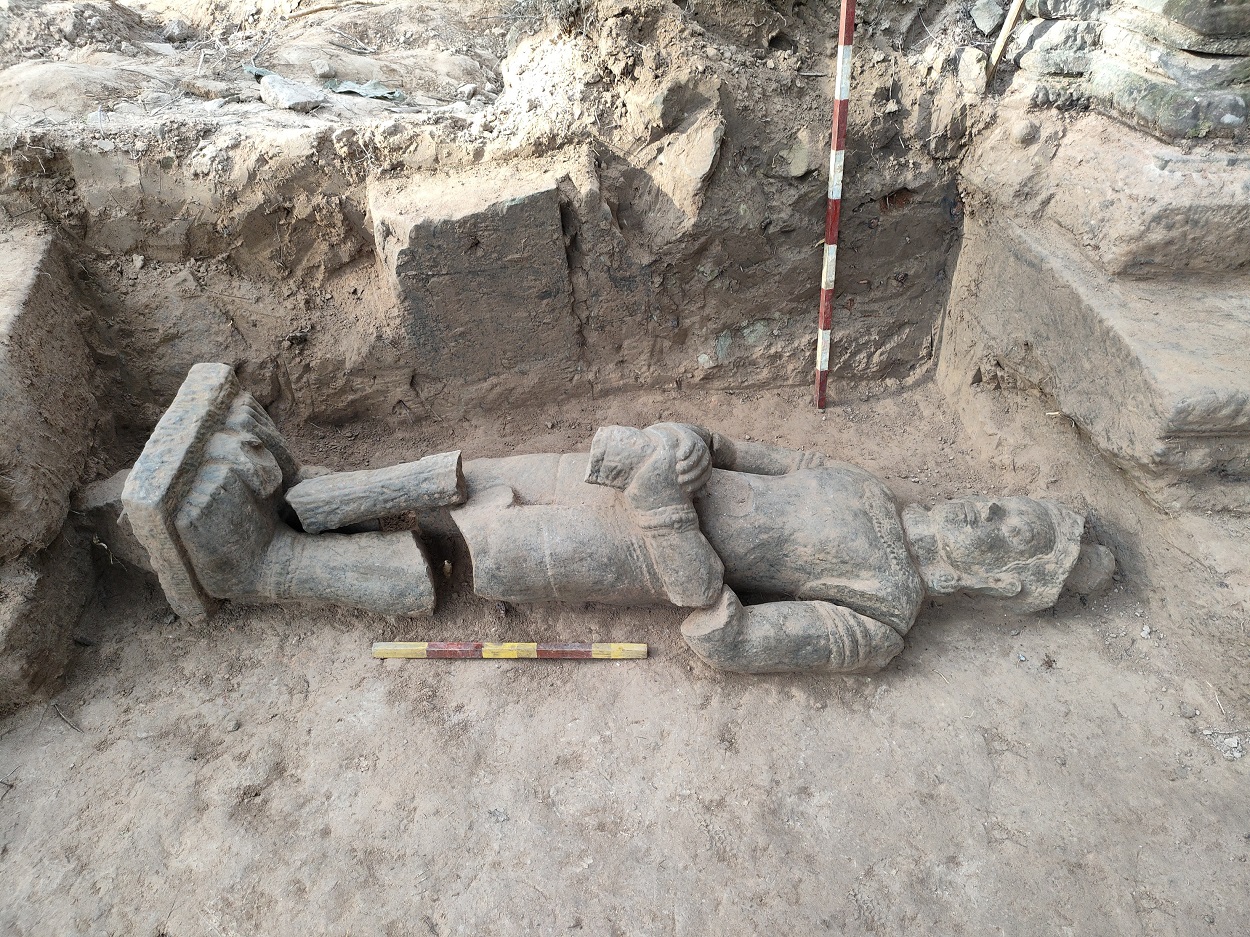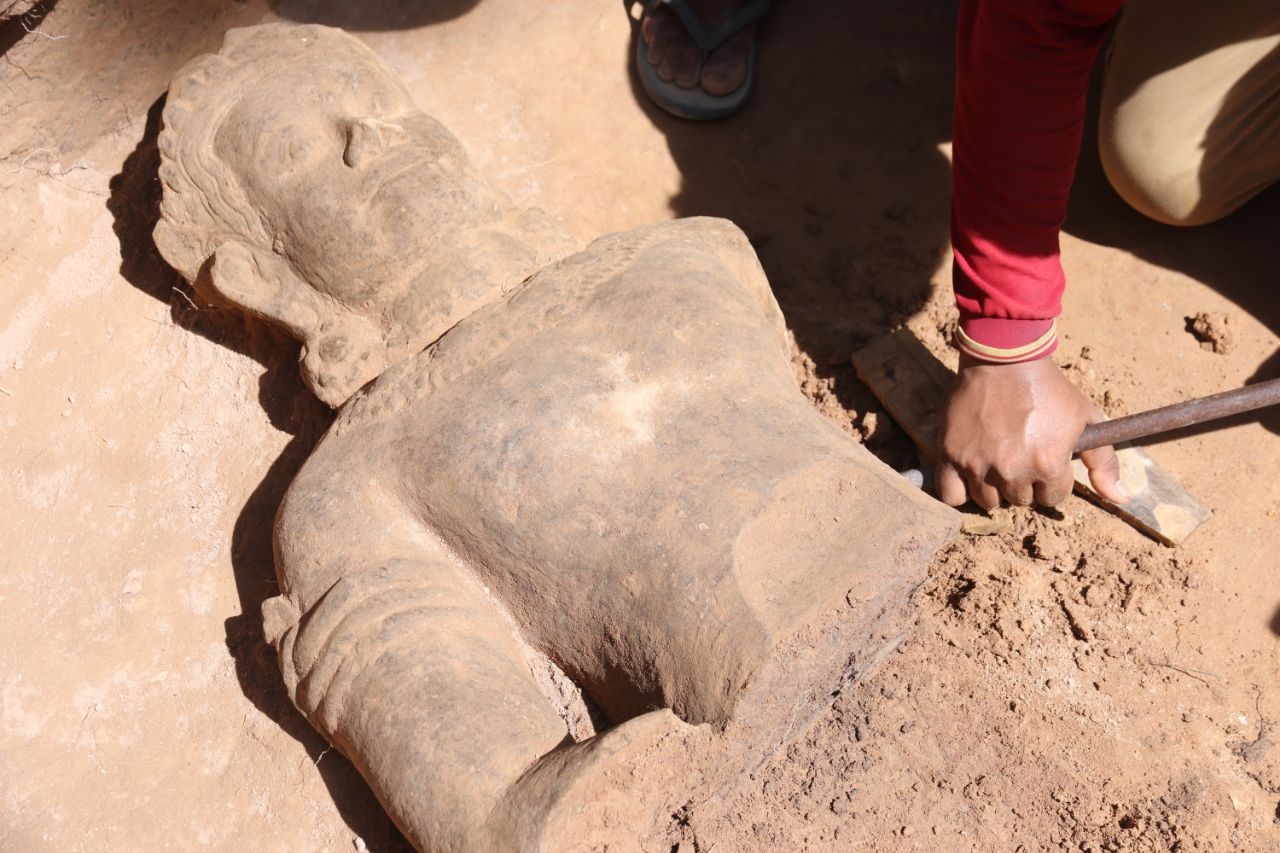Archaeologists from the APSARA National Authority have uncovered a guardian statue at the Banteay Prey Nokor temple complex in Kompong Cham, Cambodia.
Known locally as the temple of “Wat Nokor in Khum of Kompong Siem”, or “Wat Angkor”, Banteay Prey Nokor was constructed during the reign of Jayavarman VII (AD 1181–1218), the first king devoted to Buddhism in the Khmer Empire.
The complex covers an area of 37 acres and consists of a central tower surrounded by four laterite wall enclosures made from sandstone and laterite.
In addition to being the largest ancient temple complex in Kampong Cham Province, it has several distinguishing features. One of the most notable is its construction from black sandstone, which sets it apart from other temples of the period, typically built from brick or reddish sandstone.

Archaeologists from the Department of Preservation and Archaeology at the APSARA Authority recently excavated one of the gateways of Banteay Prey Nokor, clearing away layers of rubble from the collapsed upper structure.
Upon removing the rubble material, a guardian door statue was uncovered to the right of the eastern entrance to the gateway. The statue is broken into six pieces – breaking at the neck, the left forearm, the waist, and below the knees of both legs.
According to the researchers, the statue, which originally stood at a height of around 1.6 metres, is of the Bayon style, in reference to the Bayon state temple of Jayavarman VII at the centre of Jayavarman’s capital, Angkor Thom.
“The sandstone gate guardian will now be stored at the Preah Norodom Sihanouk-Angkor Museum,” Angkor Wat’s heritage police said in a statement. “It will be preserved and studied further.”
Header Image Credit : Phouk Chea / Chea Sarith
Sources : APSARA National Authority





